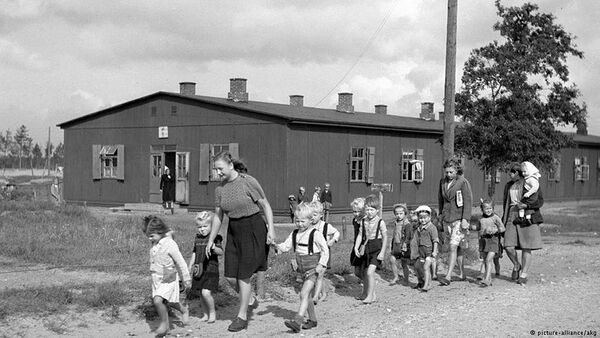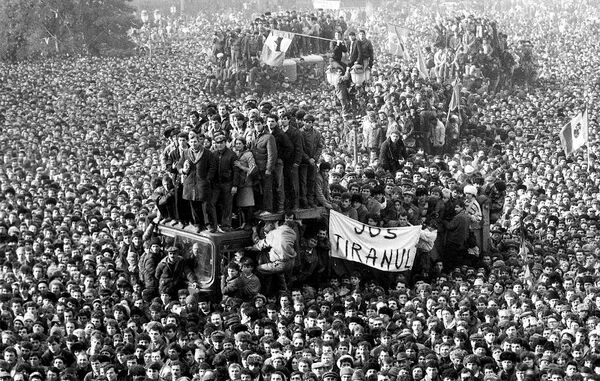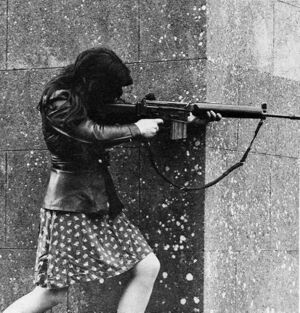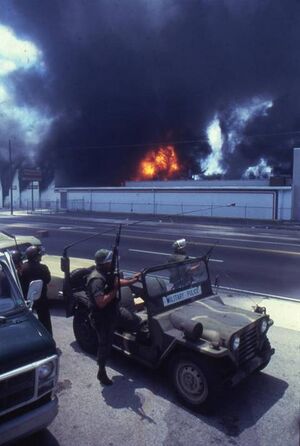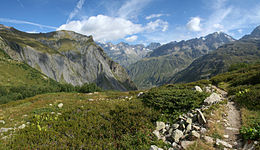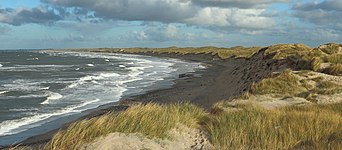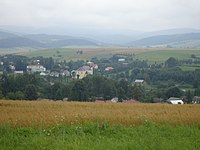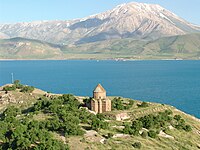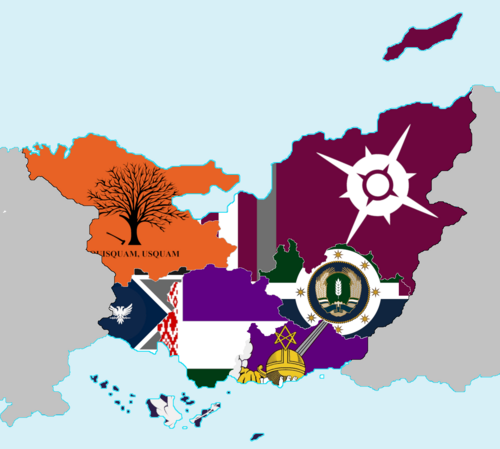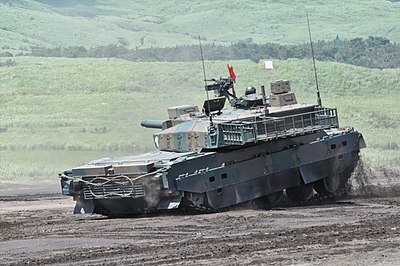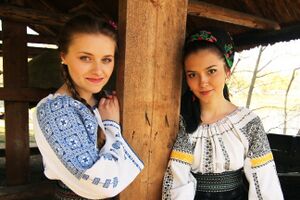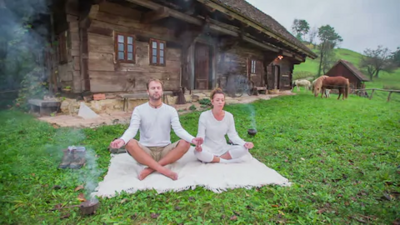Ackesia
Greater Ackeisan Republic Republica Mare a Ackesia | |
|---|---|
Motto: "Unity, Progress, Freedom" | |
Anthem: The Greatest Bond | |
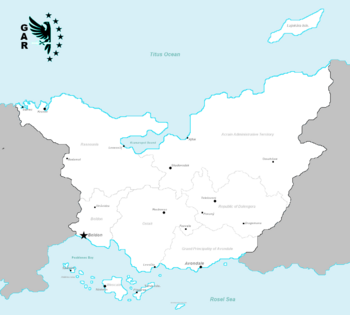 Ackesia and major cities and divisions. | |
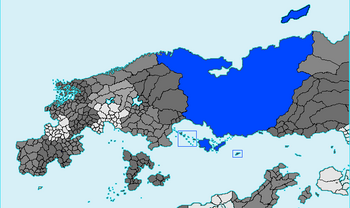 Ackesia in Lira | |
| Capital | Beldon |
| Official language | Ackesian |
| Ethnic groups (2018) |
|
| Religion | Church of Verro |
| Demonym(s) | Ackesian |
| Government | Presidential Republic |
• President | Zachariah Ackerman |
• Presiding Delegate | Arin Robert |
| Legislature | National Diet (Lower)
Chamber of Proxy (Upper):
|
| Establishment | |
• Foundation of the Kingdom of Ackesia | 1134 |
• Republic of Ackesia | 1988 |
• End of the War of Opposing Salvations and Foundation of the Greater Republic of Ackesia | 1989 |
| Area | |
• | 3,738,263.1 km2 (1,443,351.5 sq mi) |
| Population | |
• 2018 estimate | 60,942,823 |
| GDP (nominal) | estimate |
• Total | 688,248,689,212₥ |
• Per capita | 13,510.21₥ |
| Currency | Mag (₥) |
| Time zone | UTC-6 |
| Date format | dd/mm/yyyy (AD) |
| Driving side | right |
| Calling code | +42 |
Ackesia officially the Greater Ackeisan Republic is a republic located on the continent of Lira in the region of Greater Olympus. It is bordered in the east by both Pohjrahvad and Velkanika and in the west by Larova and Shepmanrike. Its capital Beldon is the largest city and social-economic hub of the nations economy while the former capital, Avondale, stands as the cultural epicenter of the nation.
Former known as the Kingdom of Ackesia, the nation is a harbor of natural resources and deep rooted culture in eastern Lira. The last century of the nations history has seen it take the largest progressive steps towards liberalization since the invention of electricity with the opening of its borders to the west and the conclusion of what was known internationally as the Stew Uprising and locally as the War of Opposing Salvations. It was during this conflict in the 1960s that poverty and famine pushed the nation past the brink and several different factions each with their own ideology rose up to either topple or empower the monarchy which lead Ackesia. Many died during this conflict, and though the armies of republicanism had the clear upper hand, those loyal to the Royal House of Avondale held on to enough power to force a peace. The end of the conflict saw the abolishment of the absolute monarchy in Ackesia with the abdication of the Royal titles by the Avondales, and the establishment of the Greater Republic. However within one province the royals were allowed to remain and style themselves as the Prince(cess) of Avonmark where they would remain in a ceremonial position among the majority pro-royal populace.
Today Ackesia is no less divided than it was during the war. However liberalization of much of the urban centers of the nation have begun to shift the political views of the youth, though the culture of Ackesia shows little will to reduce its hold on society. Poverty is one of the many issues facing Ackesia today as it continues to plague the nation and its economy. Homelessness, crime, and hunger are as much a problem in the western provinces today as they were during the Stew Uprising after a very brief improvement during the initial decades of the republic. Internationally Ackesia is known for its resource exports such as oil, natural gas, and coal which are prominent among the world's economy. Internal strife and destabilization of much of the nations infrastructure due to economic troubles has however caused its export ability to suffer, further aggregating the economic problems of the nation.
Etymology
Ackesia is derived from the word for the "Ach" people, a ethnic group of nomadic herdsmen on the Liran plains as far back as 1,000 BC. The Ach people settled along the Achillian river and created some of the first settlements in the nation around this time. Come the early 3rd Century the land of Achlandor enveloped much of the area around the modern capital. Throughout the early middle ages many neighboring Kingdoms ruled over this area, until 1134 when the first Kingdom of Ackesia was established.
History
Pre-History
The earliest records of civilization associated with the name Ackesia was the first nomadic peoples to settle around the Achillian River in the central Liran plains, and began to call themselves the "Ach" people after the violet flowers that flourished there. These settlers banded together in hundreds of separate tribes focused mostly on farming and hunting/gathering of the plentiful resources in the Achillian River Valley. For hundreds of years these people existed in close knit tribal groups until the threat of ______ invaders from ____ saw the formation of the first tribal alliances that quickly evolved into the first Kingdoms. For centuries this progresses until the beginning of the first century A.D. when five such kingdoms dominated the area settled by the "Ach" people. These five kingdoms changed little over the course of the Dark Ages, vying for power over each other and the Achs for much of this period of history.
Dark Ages into Medieval
It was not until the medieval period of history that consolidation of the five Ach Kingdoms began. Up until this point several large-scale conflicts known as the Wars of True Violet between the kingdoms and their close neighbors had left the Ach people economically shattered with plague and famine striking at the very homes of these kings and their subjects. With a large percentage wrapped up in the conflict as either combatants or civilian causalities, frontier regions of the Ach people were left as easy prey for their more ravenous neighbors. In midst of this an alliances was formed between the Kings of Beldon and Foxgrove via the marriage of their eldest children that saw the most powerful faction emerge by the name of the Kingdom of the Foxvale. This Kingdom embarked on a centuries long campaign to both expel the foreign kingdoms from the lands of the Ach people and bring to submission the petty Kings of the smaller Ach kingdoms. It was known as the 100 Years of Kin Blood where Achs killed Achs in ruthless acts of factional geocide and senseless violence, but the House of Crownfox would not be stopped until it has subjugated all of the Ach people. Most had conceded that the Foxvale would rule over the lands with cruelty and fear, but some of the remaining Dukes and Lords resisted, the most famous being Julian Avondale, the Duke of Avondale in the eastern Ach lands. At the head of the Alliance of Free Lords, Avondale broke the superior sized Froxvale army at the Battle of the Peligran Ford and set the Crownfox campaign back tremendously. For several years they would not launch another offensive, and finally after many more Achs died, Lord Avondale and his Alliance of Free Lords declared victory and ironically concluded to prevent future conflict they would found a unified Kingdom with the principles of peace and goodwill towards all Ach people known as the Kingdom of Ackesia in 1134.
In the next few centuries up until the period of renaissance in Ackesia, the Ach people enjoyed relative peace and isolation to go about their typical agrarian lives. Livestock and farming became the chief industries in Ackesia with little import export from beyond their borders.
The Coming of Verro Beoin
It was in the 11th century when the Produsian Empire settled the modern Island of Tafok that the religions of the west began to land on the shores of Ackesia and mix with the many folk religions of the area. As time passed the Verro sect of Beoin began to take more prominence in the nation and became the most predominant religion within a few centuries.
The War of Opposing Salvations
Poverty and famine rattled the nation in the early 1980s leading to the largest recession the nation had seen in its 800 year history. Those who lived in poverty and hunger began to outnumber those who did not, and much of the blame for the situation was placed on the mismanagement of Ackesian resources by the Royal Government appointed by King James Avondale the X. King James' Prime Minister was accused of funneling government funds during this time to private investments which lead to public outcry in the starving nation. In the late 1980s As pressure mounted on the monarchy to resolve the situation, incidents began to mount to the detriment of the Royal Government such as Prince Jacob the II being accused of raping three separate women at the Royal College of Beldon while partying lavishly with foreign VIP students in his Royal Family owned estate. This news sent outcry across the nation not only because of the three girls and their story being swept under the rug by Royal Family owned media, but at the small insight of the Royal Family's lavish lifestyle during times of total poverty for most of their subjects. Large scale protests ensued, centered around the largest city, Beldon, where the party and rape occurred.
Massacre of Beldon
As the protests raged on for nearly a week, commerce in the nations largest city of Beldon had shut down completely and pressure from the aristocracy of Ackesia to put an end to these demonstrations forced King James Avondale to intervene. It was on March the 13th 1987 he ordered the Royal Army into Beldon as a show of force in hopes the protests would disperse out of intimidation. What instead happened was a bloodbath, as a massive mob of impoverished subjects and demonstrators descended upon B Company of the 33rd Royal Dragoons in the middle of Julian's Square, and incident known as the Massacre of Julian Square where all the soldiers in B Company were brutally killed by the overwhelming mob while at the same time killing nearly double their number of demonstrators. The riots had now reached a fever pitch and Royal Army commanders on the ground in Beldon angered about the brutal murder of their soldiers at the hand of the mob took it upon themselves to put down the bloodthirsty peasants. Ordering the 3rd Royal Army Armored Division into the city, the Royal Army Commanders began 8 hours of bloody rampage which saw the deaths of 1,312 demonstrators on the streets of Beldon. It was later revealed that this was in direct contradiction to orders given from the Royal Palace in Avondale, but the damage had been done. Word of the Massacre of Beldon began to spread and demonstrations featuring the poor, sick, and hungry began to pop up all around the nation. All of this was aggravated by the fact that western populations of the nation differed significantly in cultural and religious views. Most saw themselves as liberal and following the practice of Recantism. These populations were most susceptible to the movement that started with the Massacre of Beldon, as opposed to the heavily Verro populations of Eastern Ackesia where protests were minimal.
For months the protests continued, until a more formalized movement rose from the ashes of the chaos. A young radical by the name of Zachariah Ackerman who gained notoriety from speeches given to assembled protestors in the city squares of Beldon, began to organize the movement into a more coherent and driven group of visionaries. Up until this point the protestors had done little more than tear up the streets of the cities in western Ackesia, the government forces simply waiting for the chaos to subside before moving back in and establishing law and order. Ackerman saw this as a status quo in which the people of Ackesia did not win. No real progress was being made to make his people free, so he took action.
Bonfire Notice
On the morning of December 11th 1987 Ackerman and his followers armed and organized set themselves upon the under-guarded Royal Public Administration Building in the center of Beldon. It was many years later that Ackerman revealed they chose the Public Administration Building as their target due to the Royal Army's low urgency for its security. Those guards who were stationed at the building had already been swayed to the cause of Ackerman and simply surrendered their weapons at the sight of his group of armed revolutionaries. From there Ackerman destroyed thousands of paper records pertaining to citizens within the city, be it criminal, tax, or property documents of noble families. Using the radio station in the building he then broadcasted what later came to be known as the Bonfire Notice proclaiming the city of Beldon to be a free city state from Monarchic rule. Ackerman called for the rising up of those who as of today were no longer subjects of the Avondale King and to liberate their home from his forces. As had been standard practice for the Royal Army after the Massacre of Beldon, the garrison of Beldon retreated from the city as protestors grew in force once more. Little did they know they would not enter it again.
Siege of Beldon and First Republic
Ackerman's movement had begun, and days after the Bonfire Notice the city had been radically changed. Those still loyal to the King sensing the coming tide fled to the east, all the while Ackerman's movement encountered a groundswell of support. The thousands of supporters organized themselves as the Ackesian Democratic Front, and began the arduous process of fortifying the city against the Royal Army. Armories were raided and weapons distributed to the militia Ackerman had formed, and on Christmas Day 1987 the Royal Army returned in force. What ensued was a thirty-day conflict in the outskirts and streets of Beldon as Ackerman's forces ambushed, raided, and drove back the Royal Army forces from the city. The Siege of Beldon conclude with a death toll of 1,200 Royal Army Soldiers and 742 Revolutionaries.
News of Ackerman and the ADF's victory spread quickly, and in the east where the more traditional and Verroist population resided. Thus the King's own groundswell began. The media under Sir Sampson Watts carefully crafted their narrative about the hedonistic and liberal Recantism movement occurring in the west of Ackesia. Thousands of Ackesians flooded the Royal Army Depots and Royal Militias were formed to fight off the perverse movement in the west, and with this the war truly began.
Several cities followed Beldon's lead in the months after the first Siege of Beldon. Forces who expelled their Royal Army Garrisons began to form into organized units and joined Ackerman's cause in the western portions of the nation. After much urging from his followers and his reported reluctance to bring more bloodshed to his people, Ackerman led these forces on a campaign throughout western Ackesia expelling any presence of Royal government or Army from the land. With the west united under Ackerman and the popular support of the majority of the population of Ackesia, on September of 1988 in the same public administration building Ackerman delivered his Bonfire Notice the year previous, the first Republic of Ackesia was declared. A draft constitution was made in the style of the constitution of Carelia and it was proclaimed elections would be held after the winter concludes and the newly formed Republican Army could secure their eastern border with the Kingdom of Ackesia.
Before the ink was even dry on the document, Ackerman led his forces east towards the Achillea river where he felt the border best exist. During this time Ackerman attempted many communiques with the Royal Government to try and declare a truce, however all attempts were met with silence as he led his force east. In November of 1988 at the Gladden Ford, the Republican Army was ambushed by the tsunami of fanatically loyal Royal Army Militias and regulars. Within a few short hours the Republican Army had been reduced by a third and Ackerman's commanders urged him to retreat west. Relenting the Republican Army quickly with the use of public transportation assets such as trains and buses relocated west under a unrelenting air campaign by the Royal Air Force. This bloody trail was dubbed the Spite of the King’s Road and the Republican army was nearly brought to its breaking point in the ensuing days.
Atrocities of the Royal Milita
Close behind the retreating Republican Army, the militias of King James inadvertently began a campaign of terror along the western bank of the Achillea. Towns, villages, cities were sacked by forces inspired to defeat the hedonistic rebels of the west. This campaign was brought to an end as soon as it was realized by the commanding generals of the Royal Army, and many soldiers involved were executed as a result for their crimes against their countrymen. The damage however had been done as the west further slipped from the grip of the Kingdom of Ackesia. Furthermore the loyalties of the militiamen began to falter after their brothers in arms whom they saw doing what they set out to do in killing the western traitors were executed by their own commanders. King James Avondale himself flew to the scene of one of the sacked villages and it was recorded by one of his aides that he openly wept for what he had done by allowing Sir Sampson Watts to stir his subjects to such radical hate of their countrymen. Watts was dismissed from the Kings service and the militias disbanded, much to the decry of the King's generals who now were left with minimal forces as they attempted to push west. The King however in solemn regret would hear none of it, and instead returned to Avondale. In later interviews with King James he said for the record that at the moment he touched down in Avondale and returned to the Royal Palace, he disinherited his son Prince Jacob whose rape of the 3 college women in large part was a catalyst for this bloodshed.
Disinheritance of Prince Jacob and the Republican Counter Offensive East
The disinheritance of cruel Prince was however not enough to quell the appetites of the people of Ackesia, there was now blood in the water. With the further massacre and bloodshed of non-combatants and the knowledge that the Royal Army had weakened by the dismissal of the militias, further cities rose up in revolt. Eastern cities such as Foxvale rose up in resistance, expelling Royal rule and dealing a brutal blow to Royal Army Logistics as the railheads and bases in the major eastern city were no longer available to use in their campaign west. Forced to retreat across the Achillea the Royal Army moved to try and regain their former eastern cities. At the same time Ackerman had regrouped, and with the rage felt by many of the Ackesian people for the bloodshed, set in his mind to cross the Achillea to liberate all of Ackesia. It was a feat he did not himself believe he could accomplish, but with further support from eastern cities who desperately cried for help to the Republic he felt righteous bravery to press forward.
After a few short weeks the Republican Army was deep into the east, lifting the siege of Foxvale, and pressing ever closer to the royal capital of Avondale. The fighting thickened as populations closer to the capital increasingly grew unsupportive of the approaching Republican Army. Resistance and insurgencies increased, harrying at the supply line of the Republican forces and destroying much of the armored units the Republic had gained through raids on Royal Army depots. Upon reaching the outskirts of Avondale, the fighting became relentless, and subjects of the King fought with as much passion as those who fought for the republic. In the suburb of Avongrove the fighting came to a stalemate, casualties mounting as the fighting was drawn out for weeks. The Royal Capital of Avondale however stayed strong, and Ackerman had a choice to make as to whether it was worth the lives of his solders to besiege such a city that did not welcome his movement.
The Eatery Truce and Abdication of King James
After follow on weeks of suffering and bloodshed, news came that the Royal Palace sought a truce with the Republic. King James wished to meet with Ackerman and his commanders, and on the 3rd of June 1989 a meeting was held in a small Eatery outside of the capital between Ackerman and the King. There King James Avondale agreed to abdicate the throne, surrendering his forces and city to the new republic under the conditions that his family would be permitted to remain in Avondale and style themselves as Prince(cess) of the semi-autonomous province aptly named the Principality of Avondale. This in large part due to the popular support of the monarchy in the capital amongst an anti-republican populace. To appease this populace to seek peace with the republic he fought at the negotiating table for their semi-autonomy and right for Avondale politicians to make decisions for Avondale. It was agreed Avondale would be established as a semi-autonomous province.
The King agreed that within this province they should only be the figureheads and republicanism should be allowed to take root and allow the people to control their own government. It was also agreed by the two parties King James and Prince Jacob should forgo any titles in this new principality and rather the title of Grand Prince of Avondale should go to his younger son, Prince Deon the II. With both sides in agreeance the siege was lifted, and both Ackerman and the former king walked out of the 9th Street Eatery to declare to the world the peace of Ackesia.
Formation of the Greater Ackeisan Republic
Months later with forces withdrawn to their homes, the Royal Army disbanded with the exception of a Royal Guard, and democratic institutions forming in all corners of the nation, the Greater Ackeisan Republic was declared as it exists today on November 14th 1989.
2003 Dalengoran Independence Crisis
Over a decade after the formation of the republic and the bloody Ackesian civil war, tensions in the eastern half of the nation once again rose. A series of protests and socialist political movements arose in the province of Dalengora, largely fueled by frustration over Beldon's agriculture taxes and policies. This movement of farmers formed the Dalengoran People's Front and began to resist police efforts to enforce strict agriculture guidelines and taxes that favored big businesses. At the same time several political factions with Dalengora began to push a referendum for independence from Ackesia, a move harshly condemned by Beldon and President Ackerman.
As a counter to this crisis President Zachariah Ackerman ordered local elements of the Republican Army to deploy and disperse these well armed militias, a move that led to three weeks of bloody fighting leading up to the date of the unendorsed referendum. Numerous civilian and military targets were victim of terrorist attacks with the DPF bombing a largely pro-Beldon community school towards the end of the conflict. This move was met with swift condemnation from all sides and thus the referendum failed by a margin of 5 percentage points.
As a result of this tension the Province of Dalengora was given a semi-autonomous status much like that of the Principality of Avondale, and exemption from Beldon's agricultural policies.
There has been widespread speculation by historians and military experts that Velkanika had a hand in stirring up tension in the province that borders the People's Republic. Many stated the DPF was far more armed than they conceivably could be without foreign aide.
Geography
Ackesia sits to the far east of Lira near the shelf between it and Lov'anika. To its north sits the Titus Ocean, the west is rolling hills and mountains that then descend into the Achillea River basin on the border with Velkanna, the east is the Sinovia mountain range that makes the highest point, and the south features the coastal areas of the Pealanee Bay which sits on the Rosel Sea. Ackesia is best know for its rich farmlands that sit near the center of the country and roll down to the coastline gradually. The majority of Ackesia consists of these rolling hills best for farming and is adorned by mountains on the north and eastern sides..
The island of Wescain sits just south of Ackesia is known for its sheer cliffs that fall into the Rosel Sea and its rocky formations that sit off of its coastline. The tides between the island and the mainland are known for its drastic rise and fall throughout the cycle of the year and often feature cave formations on the island.
Climate
The coastal zones of Ackesia feature warm climates and mild winters while the majority of the central part of the country is considered a humid continental climate and can have seasonally harsh winters in the late season. Mountain areas and those in the far north will see cool to severally cold temperatures year around.
Politics

Current State of Politics
It has been over 30 years since the formation of the Greater Republic of Ackesia and the fervor of that revolution is not lost on those who were alive to live through such times. However, those who partook in the revolution and remember times before the War of Opposing Salvations are now the parents of a new generation of Ackesian millennial who question the ideals of their fathers. Patriotism towards the Greater Republic has been engrained in these younger citizens since the 1990s when they grew up, however the recent economic situation and the uninterrupted rule of President Ackerman have stirred dissension and instability within the Greater Republic. As poverty rises and the reign of President Ackerman seems never ending, the youth of Ackesia have become restless.
Government
The national government of the Greater Republic of Ackesia is a presidential republic broken into three branches: the Executive, Legislative, and High Courts. Citizens of Ackesia largely enjoy political and civil freedoms protected by the governing document of the Greater Republic known as the Article of the Unity of the Ackesia Democratic State, aka the Ackesian Articles. This form of government has ruled over the national body of Ackesia since the fall of the Kingdom of Ackesia in the late 1980s.
The Executive
The executive branch of the Ackeisan government is headed by the President of the Greater Ackesian Republic, who acts as both Head of State and Government. The President is elected for 6 year terms with no term limits currently in place. As chief executive of the Greater Ackesian Republic, the President enjoys many powers in the day to day operations of the government such as the decree over the ministers, power of treaty, the power to appoint ministers, the power to promulgate or veto laws ratified by the Chamber of Proxy, power to dissolve the National Diet (or conversely veto an order
to dissolve the National Diet by the Chamber of Proxy), power to call special session of the legislature, is Commander and Chief of the Armed forces when appointed by the Chamber of Proxy, power to veto appointees such as Ambassadors, High Court Judges, and other officials by the Chamber of Proxy.
The executive has several means of transportation, mainly being the Heshlin 777 and various 757s in service with the Air Force. A fleet of various limos and SUVS also serve the president when needed. the president also has use of a Gunder Industries 430 helicopter and a rarely used presidential train.
The Legislature
The legislative branch of government is a bicameral legislature made up for the National Diet (the lower house) and the Chamber of Proxy (the upper house). Both of these branches are elected by the people within certain constituencies of Ackesia and are the main body of government which develops, writes, debates, and ultimately decides the nation's laws among other duties.
National Diet
The National Diet is a body of Delegates lead by the Presiding Delegate of the Diet. Each Delegate represents one of 343 constituencies across the Greater Republic and are elected by their constituents every 3 years unless otherwise dissolved by the President or Chamber of Proxy. The National Diet is responsible for writer laws within committees, the formation of national budgets, levying of taxes and tariffs, the power of treaty, the power to call for a public referendum of no confidence against the President (which if passed are subsequently reviewed by the Chamber of Proxy), the power with an absolute majority to dismiss a single member of the Chamber of Proxy, with an absolute majority revoke the power of commander and chief from the President, and the power of oversight and investigation of the government and ministries.
Chamber of Proxy
The Chamber of Proxy is the upper house of the Ackesian legislature and is unique from legislative bodies the word as it comprises of 8 individuals known as Proxies. These Proxies are elected by constituencies that standard apart from the normal meaning of the word. Instead of electing representatives by geographic area or population size, these 8 Proxies are elected by Ackesian citizens role in society. Each Proxy represents an important part of society: the Mother, Soldier, Merchant, Laborer, Scholar, Artist, Doctor, and Youth. The formation of this body was first written by Yefrem Wiley an Ackesian political activist who resided in Beldon in the 1920s. Yefrem wrote that in the future society where the representation of the will of the people did not reside in the monarchy, the roles of traditional Ackesian society would need to be highlighted as to ensure the values of the Ackesian people were represented in their governance.
This Chamber of Proxy thus is made up of the 8 pillars of society. Proxies are disallowed from holding party memberships when running or serving on the Chamber, are not allowed to have held previous office (but are allow to hold office after their time on the Chamber), and are elected for 6 year terms with a single term being the limit any one Proxy can serve. When elections for positions on the Chamber are taken, those who fit the demographic of the position in question report to polling places with applicable identification of such a demographic (e.g. proof of motherhood, doctor's license, enlistment or commission in the military past or present, etc). While the Mother is the only position on the Chamber that is gender based, the Chamber itself can be slanted towards a certain mindset should the demographics wish it to be that way. For insistence, the Soldier could also be a registered doctor, the Youth also a full-time artist, and the Mother also a studied Scientist. This interchangeability allows for the people of Ackesia to elect representatives that best fit the needs of the nation at the time of the election.
The Chamber of Proxy holds the power to ratify laws from the National Diet, dismiss the National Diet (or conversely veto a dismissal by the President), impeach the President, approve of budgets, taxes, and tariffs from the National Diet, recall Ambassadors, appoint generals and admirals, disapprove of treaties made by the president, call into question a veto or similar decision made by the president to be reviewed by the High Court, is commander and chief of the military unless otherwise appointed to the President, the appointment of High Court Judges, the recall of individual Delegates, and the power of treaty.
The High Courts
The High Courts of Ackesia is a collection of Judges appointed by both the President and the Chamber of Proxy whom are the ultimate say in the verdicts for national court cases, laws called into question by the legislature, trials of Presidents, and other judicial matters. The High Courts themselves are a circuit of 9 courts each sitting individually in different parts of the nation. Cases are brought to the High Courts by either lower courts or the legislature and it is determined by all 9 the merits of each side of the case based on already ratified laws or the Articles of Ackesia. High Court Judges serve 6 year terms.
Political Divisions
Ackesia is divided into 7 political divisions with various levels of autonomy. All together there are 4 Provinces, 2 Autonomous Regions, and 1 Administrative Territory. As a Greater Republic, each of these territories are either closely administered by the central government or allowed self-governance to some extent. However all administrative divisions are given representation within the legislature of the government.
Provinces
4 provinces make up a core of the western portion of the nation. There are Beldon, Wescain, Rasnounia, and Ostait. Each is governed by an elected Governor and features a local Provincial Assembly.
Semi-Autonomous Regions
2 divisions are designated as Autonomous Regions. These are the Republic of Dalengora, and the Grand Principality of Avondale. Autonomous regions are given special self-governance and control of local laws and political structures.
Republic of Dalengora
The Republic of Dalengora is governed by the Premier of Dalengora and a Diet similar to the structure of the National Diet. Dalengora has a difficult relationship with the rest of Ackesia, its inhabitants the Bur-acks speak a different dialect of Ackesian and have different political views. In the early 2000s the Republic of Dalengora introduced a referendum to its citizens on independence from Ackesia which led to an intense standoff with Beldon. The Dalengornan crisis led three weeks of bloody clashes between Dalengornon People's Front terrorists and the Republican Army. As of 2010 concern of a Dalengora breakway has settled but some pockets of resistance and political dissention to Ackesian rule remain.
Principality of Avondale
The Principality of Avondale is structured as a crowned republic with a head of state the Grand Prince of Avondale and the Head of Government the Prime Minster. The legislature of Avondale is a Westminster style Parliament.
Special Administrative Divisions
1 division, Acrain is designated as a Administrative territory. This territory while still headed by a governor and Territorial Assembly, has increased levels of central government control due to economic interest and development.
Foreign Relations
On the international stage Ackesia largely acts in a neutral fashion towards most other entities, focused mainly on the furtherance of its trade power and protecting both its exports and imports. With a goal of achieving amicable relations with the majority of the international community Ackesia has a large focus on its diplomatic efforts with the Ministry of Foreign Affairs and Trade looked upon as one of most important of ministries in the government of Ackesia.
Ackesia is a member/observer of a variety of international organizations both military, diplomatic and humanitarian in nature. Notably of which is RESP.
Military
The Republican Guard of the Greater Republic of Ackesia is a three branch military focused on the national defense of the nation of Ackesia. The Republican Guard Army, Republican Guard Air Force, and Republican Guard Navy each play a role in not only the defense of the Ackesian homeland but the defense of Ackesia’s interests abroad. While much of its force is located within the boundaries of Ackesia, the Republican Guard plays a large role in the securing of trade lanes on the open ocean as well as the projected force applied to resolve trade disputes or instabilities that threaten the economy of Ackesia.
The history of the Republican Guard is short, with its formation several years after the formation of the Greater Republic of Ackesia, it has undergone growing pains in the early 2000s with the modernization of equipment and force structure. Recently economic recession has affected its ability to procure more modern equipment, but an imitative is underway to bring the force into modern times.
The force consists of 1,018,856 soldiers, airmen and sailors across all three branches, making up 2% of the nation’s population. While the largest of the branches is the Army, the Navy is one of the most well-funded as it is expected to project enough power to secure the nation’s trade lanes with its partners that receive energy exports and send imports of consumer goods. The Navy is a significant force and one of the finest in Lira, able to project the nations power where needed to ensure the free movement of trade and commerce.
There also exists several forces within the Ackesian military controlled by subdivisions of the nation. Within the Army itself, 3 separate organizations exists and are funded by the political divisions of Ackeisa. The Provincial Guards are forces within 5 of the 7 divisions of Ackesia and are under direct control of the Ackesian High Command. While they primarily exist in the defense of these provinces, they are also deployed for riot control, humanitarian relief, and in support of local law enforcement. 2 of the divisions of Ackesia known as the Autonomous Regions also have their own Guard. Within the Republic of Dalengora, the Dalengoran People's Defense Force exists at the command of the Premier of Dalengora, and comprises of several brigades of troops. Akin to this the Grand Principality of Avondale still operates a Royal Guard which largely acts as a ceremonial unit to the Grand Prince, but also can perform much of the same duties as Provincial Guards.
Demographics
Population
Ackeisa is a nation of deep national heritage. Many of its population are very loyal to their national identity but with ensuing generations this has lessened as liberalism spreads in the western portion of the nation. Society and culture is mainly centered around the family which are on average around six persons in size. These families are patriarchy in nature with the man being at the head of the household. However, the matron within the household is highly respected and often revered highly by almost all within the family. Typically rural family units live together within a homestead, making populations within individual family properties rather large and clan like. Many more modern and liberalized families in the western portion of the nation average less children per household and are urbanized.
A large part of traditional Ackesian living is the Ackesian honor code, cosnisting of a variety of cultural standards for family, treatment of guests, roles of each family member, duty to the Ackesian people and even some codes of martial conduct. Rural and traditional families of the east still observe much of this code and teach it to their children. However as children grow in Ackesia many have begun to migrate east to larger cities where much of this tradition is lost.
Ancestor worship is also an important part of Achesian family culture as one's family past is highly regarded in their social standing. Often shrines of various sizes appear on family lands where families often visit to pay their respects to their past. Family members are typically buried on family grounds, but for the less fortunate in society who do not own land this is often hard. The richest often have grand spectacles for their shrines where statues and glyphs adorn the walls and grounds. While heavily Beoin portions of the population would not consider what they do worship, some in western Beoin sects have criticized the practice as heretical as it stems from pagan Ackesian traditions.
Culture
Traditional Ackesian culture stems from the origins of the Ackesian people as a nomadic and tribal group centered around the river basins of what is today modern Ackesia. Thus these tribal bases have evolved into the very family central aspect of Ackesian culture. Large families are common in more traditional areas with plural marriages still practiced.
Urban western areas of Ackesia have become more liberalized and often seen singular marriages and smaller families shrugging off the traditional insular family groups in favor of more modern styles of living.
Often more liberalized families will travel west for vacations to such destinations as Produsland which is popular among Ackesian tourists due to easy access and warm climates and beach areas.
Religion
Beoin
The primary religion in which the Ackesian people observe is Beoin and in particular the Verro sect with Recantism following closely behind. Verro originated in the nation through the spread of Produzian missionaries north from the Tafok island where a colony existed. Verro mixed with many folk religions of Ackesians until it became the predominant religion of the nation several centuries later.
Avondale is home to the Cathedral of St. Sokolov where the Arch-Bishop of Ackesia sits. The Arch-Bishop while having little power in Ackesia, still performs the rituals and rites of the Avondale Princes and Princesses as they did with the Kins and Queens of Ackesia.
Folk Religions
Folk Religion in Ackeisa is steeped in cultural heritage and still more wildly practiced than many original folk religions around the world. Ackesians before the arrival of Verro primarily practiced Achari Grecian which is the monotheistic worship of the God of Summer (aka by the Dread Lord, The Lazy One, and the Defender). The focus of the religion is sacredness of the family and of the people of Ackesia. The purity and hegemonic nature of Ackesian culture as well as the singular worship of "the one" leader lead to a large distrust of western Liran nations only seen weakened in recent years of liberalization.
In the history of Achari Gregian there has been little divine interaction besides the great purge which occurred when the Achari Gregian champion with the aid of the God of Summer drove out the god of the underworld: Silva from the land in ancient times. It was widly believed in ancient times that the Dread Lord spoke directly through the tribal leaders of Ackesia and lead in their decision making. As such these tribal leaders, or "Ackulars" as they are called in the Ackesian tongue, also acted as religious leaders.
The afterlife in Achari Gregian is one that is sought after by many. It is a joyous place where the dead can reunite with their ancestors or loved ones and live on for eternity. To reach the afterlife however one must be a true servant of the God of Summer and not wane in the face of other influences.
The supernatural in Ackesian folk religion and to some extent Ackesian localized Verro faiths is greatly feared and respected. To that end it is very rare to find "magic" users in Ackeisa outside of the clergy of Achari Gregian. Spirits are also respected within traditional Achkeisan society and folk religion. It is a belief that all settlements or villages are home to a spirit which guards them from harm. Many make sacrifices to the spirits of their villages.
Worship is primarily an individual ritual that happens on a personal basis involving incense and meditation. Many travel or make pilgrimages to shrines located all throughout rural areas of the nation. Many villages have village shrines for its inhabitants. There are many holidays in the Ackesian culture, most like King's day are to celebrate important Ackesian figures including heroes, martyrs, and clergy. Other holidays are meant to celebrate harvest, new moons, or the changing of the seasons.
The commandments and teachings of the Summer God are passed down orally by those practicing folk religions, which is the primary reason for the decreased spread of older practices. While some written text exists, they are often non-centralized and tribal in nature. Mortals are said to be the children of the God of Summer and thus he looks down on them with love from his fortress in heaven. To represent our path to the afterlife the symbol of the labyrinth is often seen in Ackesian culture. The dragon also is often seeing as it is the harbinger of death in Achari Gregian.
Holidays
There are various holidays celebrated by the Ackesian people of various significance. Many date back to ancient times of the tribal Ack people, while some celebrate recent events.
Jubilee
Traditional celibration mainly observed vt family feasts and local township celibrations. It is in commemoration of King Brack the IIIs victory over the invading Lunders in 1123. It is primarilly held in October during harvest. Modern observation of this holiday has mainly turned it into a family gathering holiday, with little significance placed on the celebration of King Brack.
Economy
Ackesia is a resource rich nation which is focused on the extraction, refinement, and trade of its natural resources with the rest of the world to boost its own wealth and prosperity. Fossil Fuels, Natural Gas, Coal Mining, and foodstuffs are critical sectors of the Ackesian economy with energy exports rushing to the market in western Lira. As such a secondary industry of logistical transportation of goods has grown in symbiose to its energy exports with fleets of container ships coming and going from Ackesian harbors every day. Rail and air transportation also play a critical role in the movement of Ackesian goods.
Imports are also critical to the Ackesian economy as the movement of consumer goods from Eastern Lira is critical to the markets in large urban centers with more rural areas seeing less of a share. These imports are equally guarded parts of the Ackesian economy and see much of the focus of the government when working with international powers to secure the trade of energy for capital to buy such consumer goods.
Several nationalized and private ventures exist in Ackesia for all activities related to energy extraction, production, and shipment. Foreign investments are rarely allowed as Ackesians aggressively defend their natural resources through either nationalization or other aggressive means. The Economy of Ackesia can be classified as a mixed economy with the government stepping in to both manipulate and nationalize as needed to protect the nations interest. Portions of the market remain relatively free with Ackeisan citizens free to export and sell domestically their own goods.
Education
A big part of Ackesian culture centers around education, which is a recent trend since the reforms of the 1920s and education being available to the masses and not just the aristocracy. Many families fund community schools that they send their children to make them of higher quality than the local government can provide. This is something that most provinces ruling over Ackesia have embraced and have created programs much similar to a 401k where local governments match the communities contributions into their schools. Families often save large amounts of money to send their children to secondary education as well to give their children a better start on life than they had. Many of the older generation have some reservations about this, preferring to keep their families centralized in rural areas observing an agrarian form of life like is tradition for much of Ackesia.
Higher education in Ackesia is a collection of institutions both public and private and of carying specilizations from general higher education, buisness, and engineering. Standards for admitance into higher educational instiutions vary by the school, however many public schools and prestigious schools have high testing standards.




